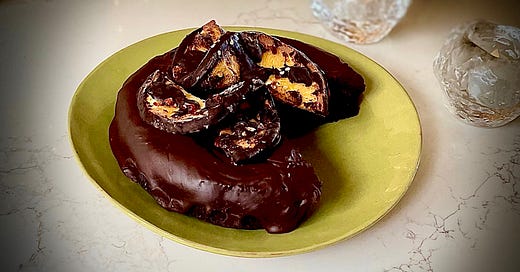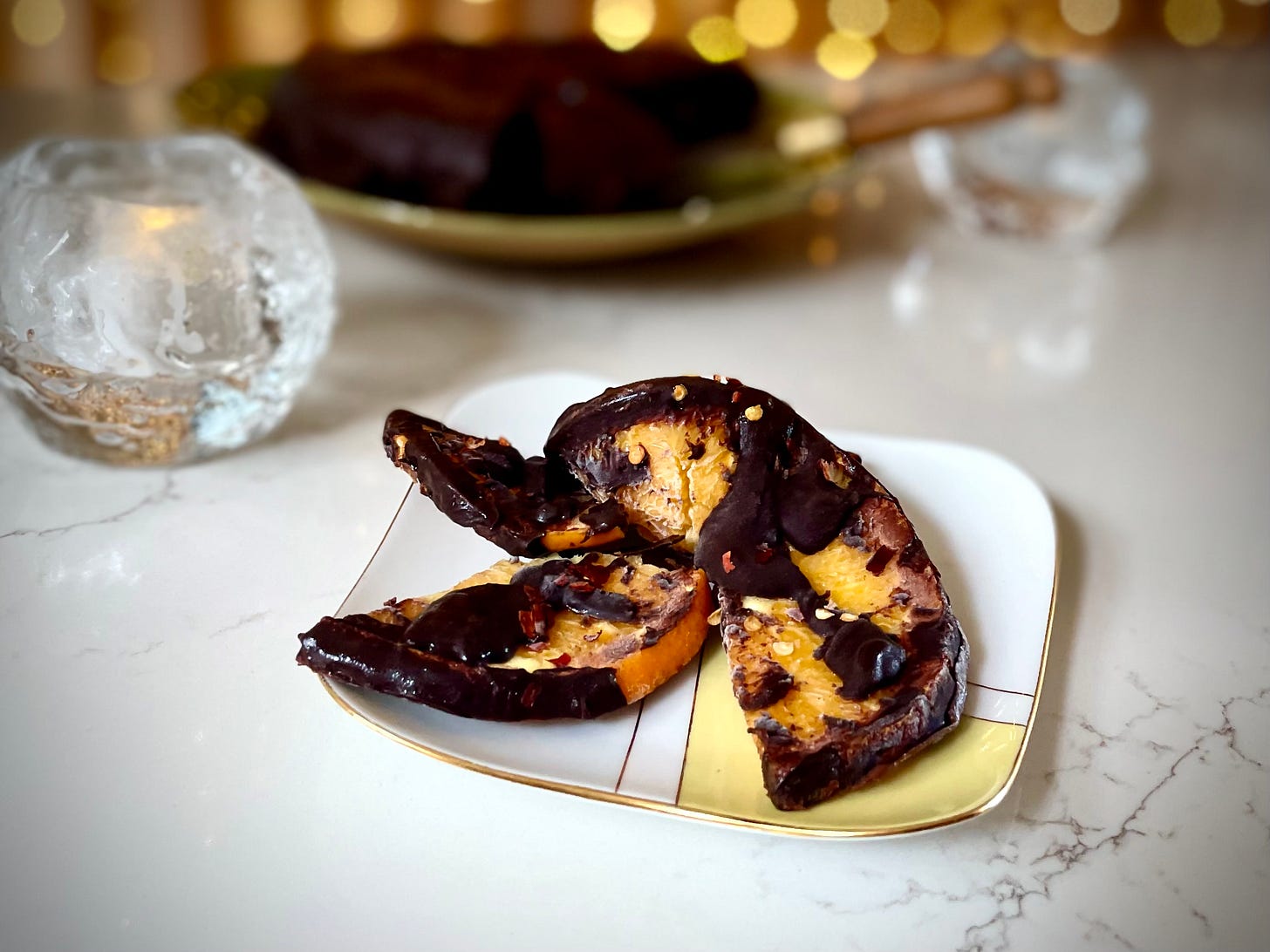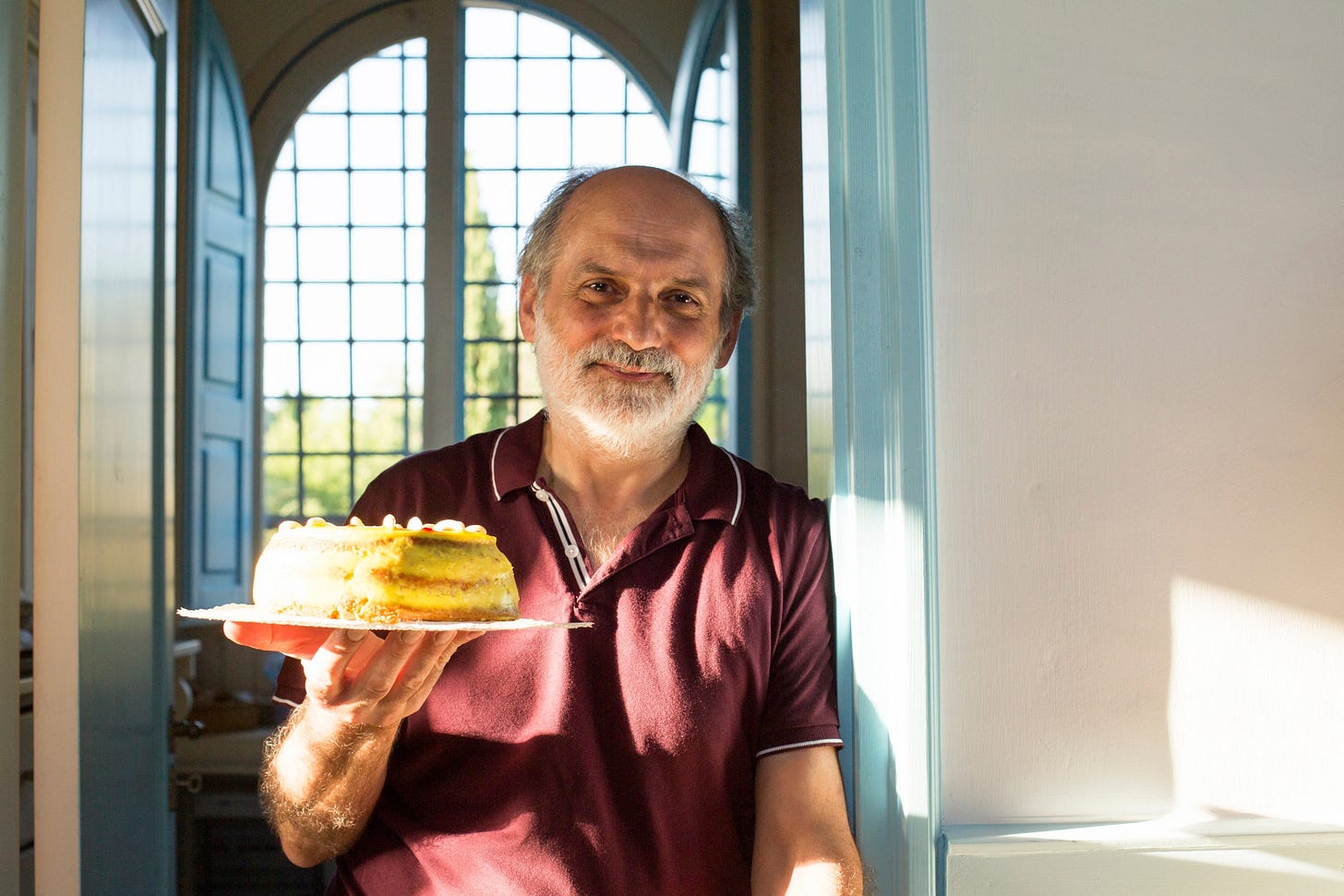I read a lovely thing by writer and forager extraordinaire
yesterday that went something along the lines of “when the world feels ugly, attending to beauty is urgent”. That fits nicely with my thinking about Matariki, which feels like an absolute gift in the coldest, darkest time of the year.And while I’ve taken a not-particularly-flattering photo of it, largely because we were in a hurry to eat it, here’s a beautiful cake that is my gift to you. Mānawatia a Matariki!
Kūmara, chocolate and orange cake
This cake is light, luscious and gluten-free – and no one will believe you when you tell them it’s got kūmara in it. It doesn’t necessarily need the chocolate ganache icing, but if you’re going to go swimming then you may as well get wet.
For the kūmara: use a purple-skinned, yellow-fleshed one rather than the bright orange variety, which tends to be a bit sloppier when mashed. It should be room temperature rather than hot, when you add it to the cake.
For the cake:
1 medium-ish kūmara - about 300g
200g unsalted butter, softened
200g caster sugar
1 tsp vanilla extract
Finely grated zest of a small navel orange
4 eggs, at room temperature
120g ground almonds
30g cocoa, sifted
2 tsp baking powder
1/4 tsp salt
For the chocolate ganache:
125ml cream
125g dark chocolate, finely chopped
1 tsp butter
Heat the oven to 175C and grease and line a 23cm tin (for a taller cake, use a ring tin).
Peel the kūmara and cook in boiling salted water until soft. Drain well, then whip with a fork until smooth. Measure out 200g and set aside (eat the rest to fortify yourself while you make the cake).
Cream the butter and sugar together until light and fluffy, then beat in the vanilla and orange zest. Add the eggs, one at a time, while continuing to beat (adding a spoonful of the ground almonds along with each egg will help prevent curdling). When all the eggs have been added, fold through the remaining ground almonds, cocoa, baking powder and mashed kūmara until combined.
Pour into the prepared tin and bake for 45-50 minutes, until a skewer comes out cleanly. Leave in the tin for 10 minutes, then turn out to a rack to cool.
To make the ganache, heat the cream in a small pot until simmering. Remove from the heat and add the chocolate and butter. Stir until smooth and leave to cool for 10 minutes or so, then pour over the cold cake. For extra indulgence - it is Matariki after all - top with the chocolate and chilli-dipped orange slices detailed below.
Good Things
Chocolate and chilli frozen oranges
Here’s a trick I learned last year and got completely addicted to. Start by cutting a perfect navel orange (discard the ends) into 1cm slices, then cut these in half. Melt about 75g dark chocolate with 1 tsp oil. Add the oranges and stir until they’re reasonably well-coated. Arrange on a baking paper-covered tray and sprinkle over some chilli flakes and a pinch of flaky salt. Transfer to the freezer until you’re ready to eat (or at least 20 minutes, whichever comes first). These are good by themselves, on cake or on top of ice cream.
Spicy hot chocolate
If frozen oranges sound a bit frosty, here’s something a bit cosier. I wouldn’t suggest serving this with the cake, but it’s very good on a cold mid-winter morning.
For one serving you’ll need:
250ml milk (any kind)
1 tsp cocoa
1/4 tsp ground cinnamon
A pinch of chilli flakes or powder
50g dark chocolate, finely chopped
Put the milk, cocoa and spices in a small pot set over medium heat. When it comes to a simmer, add the chocolate. Turn off the heat and stir vigorously until the mixture is thick and smooth. To make it fluffier in texture, use a milk frother whizzer thing (I have one, but we never have any batteries for it) or pour into a coffee plunger and ‘froth’ that way. Pour into your favourite mug and drink immediately.
‘I’ve chosen my path, and I’ve followed it’
While we’re on the topic of sweet things… if you like a) Italian desserts and/or b) watching someone at the top of their game, then dig out this 2018 episode of Chef’s Table, which tells the story of Sicilian Corrado Assenza, who presides over a pasticceria-gelateria that’s been in his family for four generations. While there’s much to be learned just from watching him handle brioche dough or make delicate hand-coloured frutta martorana, Assenza’s story is also about fighting against the industrialisation of food production.
Next week on Fancy Butter… bread for people who think they can’t make it.







